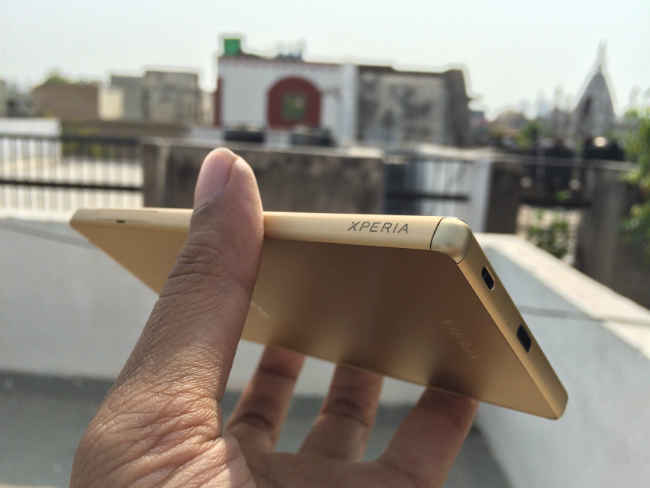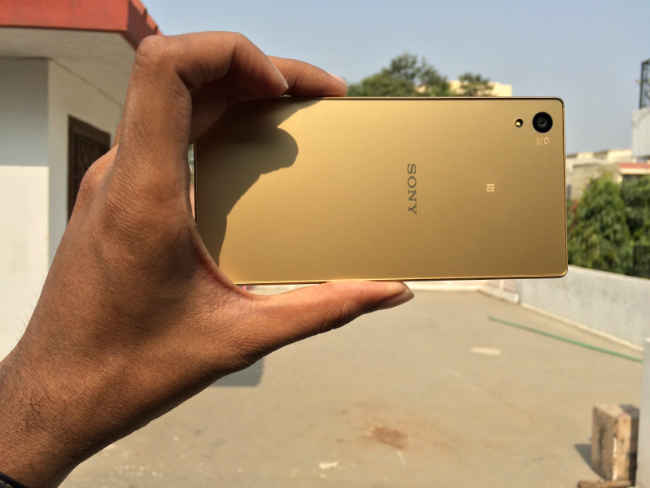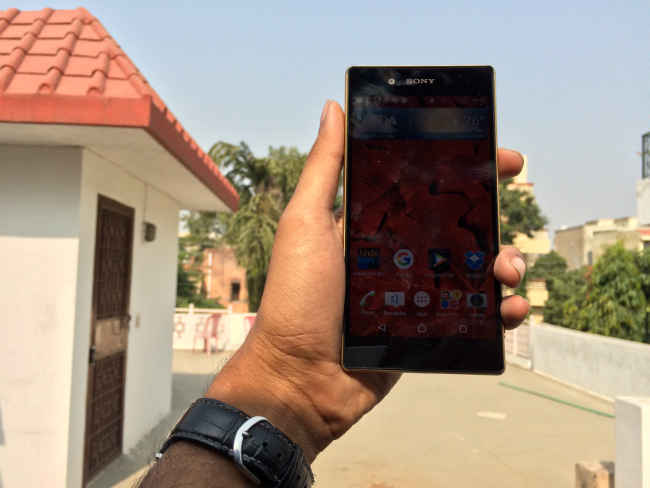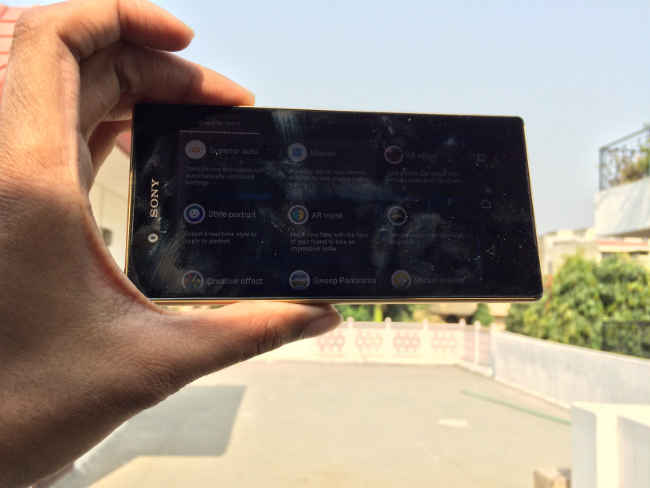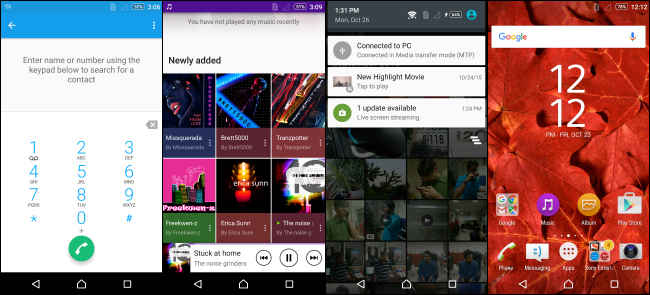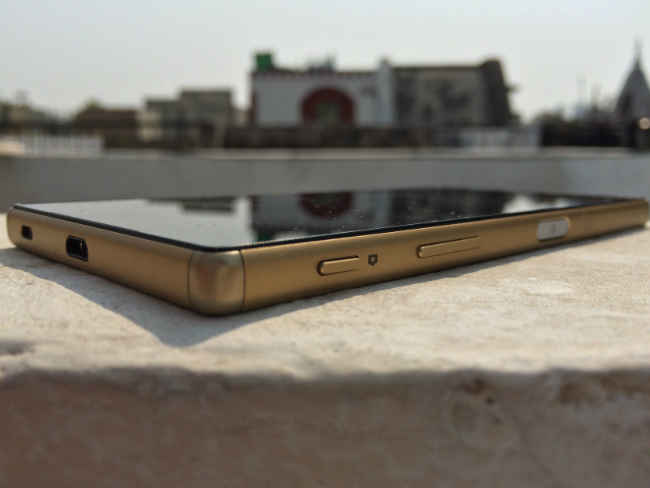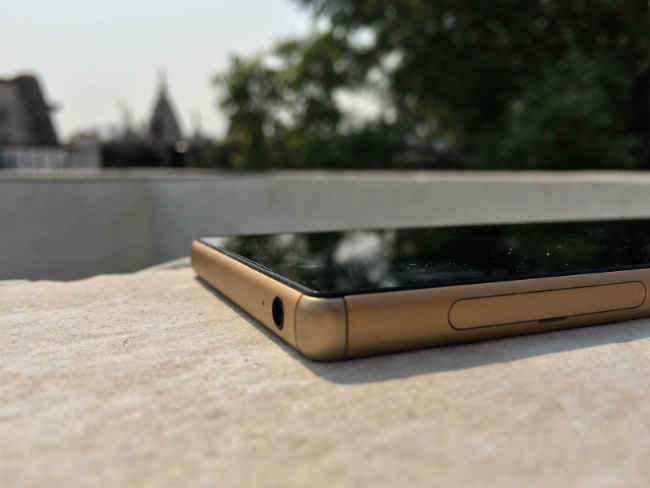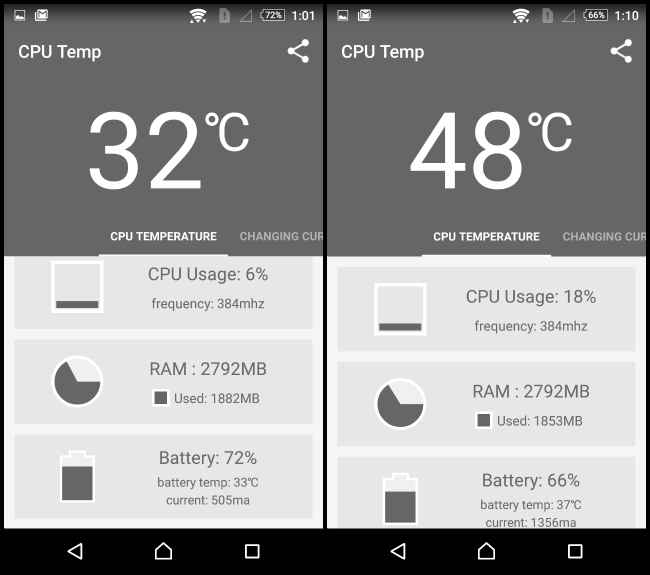Sony Xperia Z5 Review : Constricted beauty, and a divided mind
The Sony Xperia Z5 is a beautiful smartphone. It looks good, feels good, sounds good, and almost performs good, unless you really want to game hard on your smartphone. Sony has bet big on its present generation flagship smartphone, but the Xperia Z5 does disappoint in a certain few factors. For one, the camera’s focusing speed is nowhere near the 0.03 seconds that was advertised, and in reality, is quite slow. Secondly, the heating issue still persists, and for a smartphone that bears a price tag of Rs. 52,990, such flaws are not really acceptable. It is a phone that is easy to love, and I have always loved Sony’s devices, but in terms of absolute performance, Samsung’s top-of-the-line Galaxy devices do perform better. The Sony Xperia Z5 is a saga of restricted beauty, and polarising opinions. You will love it for what it is, but you will simultaneously realise that there are other smartphones in the market, that are simply better in terms of core performance.
As always, Sony has stuck to the unassuming packaging, not giving away any hint with its packaging that this is one device that’s targeted at the very, very top. Right out of the box, it is evident as to why certain brands will remain leagues ahead of others, despite not having the number of buyers it once had. The Sony Xperia Z5 is a beautiful, well-built device. While the design philosophy remains the same, there are certain minuscule factors that Sony has worked on, bringing the Xperia Z5 up to perfection.
But, at the end of the day, the Xperia Z5 had an uphill task of silencing its critics with real-life performance. Does it? Here’s breaking down the Sony Xperia Z5, into detailed sections.
BUILD
Theoretically, the singular word ‘excellent’ can powerfully sum up all that you would want to know about the Sony Xperia Z5’s looks. Crafted purely out of metal and frosted glass, the SIM and memory slots are hid by a flap that seamlessly fits into the side panel of the Xperia Z5. At the top edge, the 3.5mm audio port is placed strategically, so that angular headphone jacks do not stick out awkwardly and create a hindrance. The bottom edge houses the microphone, a down-firing speaker (that forms one part of the two stereo speakers as part of Sony’s LDAC audio, enhanced by the DSEE HX engine), and the microUSB port. The right panel is the most populated, with the dented power button/fingerprint scanner at the dead center, with the volume rocker to the lower end, and the camera button near the edge. The overall arrangement of buttons by Sony is ergonomically very efficient, once you realise the thought process of Sony’s designers. If you have a lower grip of the phone, your thumb should neatly rest on the volume rocker. From this point, it is easy to reach out for the power button, scan your thumbprint and unlock your device. Sony has also sized and spaced its keyboard within the bottom half of the Xperia Z5, and unless you have very short palms, one-handed typing should not be a massive issue.
The smooth metal blending in with glass on both ends make for a delightful build
The above-mentioned point is a crucial factor to consider, seeing that many smartphone manufacturers are making large screen devices that are difficult, or downright impossible to use with one hand. If you happen to need two hands to maneuver a phone, you’d rather buy a tablet, or maybe bring back the old walkie-talkies. Anyway, the ergonomics of the Xperia Z5 are neat and as close to ideal that a smartphone with a screen of more than 5 inches diagonal size can get to. Coming to the build quality, the Xperia Z5 feels very premium, although gripping the phone, owing to its smooth, flawless metal sides, might be tricky. If you are not careful, you might just end up dropping the phone far too many times, which brings me to the Xperia Z5’s back panel – the amazing looking frosted back.
The frosted back panel is a welcome change over the reflective mirror back panels that previous Xperias have sported. The matte finish gives a shimmer to the device, and the neat, shaded lettering of the brand names and camera detailing look like they’ve all been paid a lot of attention to (which is a good thing, seeing that this is not a phone that you’d exactly call affordable). While the frosted back is a win for the designing team, I’m not too assured about its durability. Sure, the Sony Xperia Z5 is not a poorly built phone in any way, but The Verge has already reported about a broken back panel. While this might have been an isolated incident, the overall build of the Xperia Z5 does not really encourage you to play pass-the-parcel with it.
The frosted glass looks really good, although we aren't assured about its durability
Overall, the Xperia Z5 is a very well designed smartphone, but you would rather be careful in handling it, than risk damaging it in any way. The edges have sharp curves, which work for me. I like the definite design of the Xperia Z5, the smoothness cleverly disguising the sharp edges.
Purely Sony.
DISPLAY
While the stellar attraction lay with the Xperia Z5 Premium (and its 4K resolution display), the Xperia Z5’s display is nothing short of brilliant. The Xperia Z5 packs in a TRILUMINOS IPS-panel LCD display enhanced by the X-Reality engine, with a resolution of 1080×1920 pixels. That’s the technical description, but in reality, the Xperia Z5’s display is actually as good as it sounds on paper. Sony has essentially taken cues from its coveted television lineup, and fit the same panel on to the Xperia Z5, completely negating any questions that many would have had over the Xperia Z5 not sporting at least a 2K resolution display.
To begin with, the colours on the Sony Xperia Z5 are sharp, true-to-source, and have added contrast and saturation levels to make objects look sharp and pristine. Additionally, you can choose to not use the two image enhancement modes – Super Vivid and X-Reality, and the display still looks good. You can also adjust the white balance of the display, which is slightly tilted to the cooler side by default. You get sliders to adjust the amount of red, green and blue on the display, through which you can control the colour curves to get the exact texture and colour balance that you want on your display.
The display is one of the best that we've seen
The Sony Xperia Z5 is really bright, and viewing content under direct sunlight is easy, despite the reflective screen covering the display. The brightness adjustment simultaneously balances contrast and saturation levels too, so that the display does not end up being on the dark side and low brightness levels. Even at the lowest brightness, the screen is equally sharp, and good to look at. The high brightness levels come particularly useful if you wish to watch movies on the Xperia Z5, which is a sheer delight. Films like Avatar, Life of Pi and Gravity look surreal on the Sony Xperia Z5, and playing games on this device is also a brilliant experience (gaming on the Xperia Z5 has a slight downside, which we shall discuss later).
You can stream content at 2K and 4K resolutions (provided you have a fast enough internet connection for that), and it does look brilliant. The Sony Xperia Z5 is built to display high resolution content, and its class shows. There is no colour shift on the display, even when you tilt the display beyond the 160-degree mark. This, coupled with the excellent sunlight visibility and the crisp colours, makes it one of the best display panels on mobile at the moment.
The richness of the display contributes to overall excellent viewing experience
The Xperia UI, as always, is neat, smooth flowing and uncluttered. Home screens and app drawers are separate, and the neat layout of the Xperia UI, coupled with the smoothness at which it shifts through pages, rows and columns show Sony’s designing prowess. The Xperia UI’s fluidity is one with the smooth flow of the exterior design, and the synchronisation of the two is an essential aspect of flagship smartphones to exude a premium feel, and Sony has got this aspect absolutely correct.
Touch performance is excellent, and the display panel is responsive to feather taps and swipes. You’ll be hard pressed to note missed taps and swipes, and the uber-responsive screen is particularly useful when you’re playing games like Marvel: Contest of Champions or WWE Immortals. Even in popular, lightweight games like Jetpack Joyride or Subway Surfers, the added responsiveness of the display aids performance.
Xperia UI: (Left-Right) Dialer, Music, Notification and Image Gallery, Home Screen
Although nothing less was expected out of the Sony Xperia Z5, and it would have been a shame had the younger brother of the world’s first 4K-resolution display smartphone underperformed, it’s really pleasing to see the amazing display and touch response, and the accuracy of colours that the Sony Xperia Z5 delivers.
CAMERA
The Xperia Z5 family has been equipped with a new generation Exmor RS for mobile multi-aspect sensor, marked at 23 megapixels. While the total sensor size is 24.8 megapixels at a resolution of 5984×4140 pixels, it renders 4:3 aspect images at a resolution of 5520×4140 pixels, and 16:9 images at a resolution of 5984×3366 pixels. This leads to cropped image sizes – pillarboxing and letterboxing at 16:9 and 4:3 crops, respectively.
Theoretically, the Sony Xperia Z5 has one of the most powerful cameras in the industry. However, in real life, you will need to go through a lot of its settings within the camera application, to actually shoot images at its full potential. By default, images under well-lit conditions show massively oversaturated, unreal colours and changed skin tones, with a lack of sharpness, too. The sensor residing in the Xperia Z5 is susceptible to noise, and the noise reduction algorithm is not its forte, because of which final images rendered remain noisy and soft. Being one of the most spoken-about flagship smartphones of this year, parallels of the Xperia Z5’s camera had to be drawn with the new iPhone 6s, and the likes of Samsung’s Galaxy Note 5. While certain images do come out better than the ones taken by the iPhone and the Galaxy Note 5, the overall performance is too inconsistent to be termed phenomenal.
The camera button remains, and is quite helpful
For most of the images, shifting to Manual mode meant that each and every setting had to be tuned to the one sweet spot, to get a reasonably pleasant photograph. The Superior Auto setting was, yet again, unpredictable, and the light balancing of the camera was really weak. While at night, or in dimly lit conditions, it does perform reasonably better, in daylight conditions, neutralising the lighting across the frame is really difficult, and is in fact much easier in manual mode. While the Xperia Z5’s focusing is not exactly slow, it is sluggish at times, and it often failed to lock on to a subject, in touch focus. The lens has a flare that’s particularly vivid when pointed at a bright source of light, directly. While in some cases it does add a touch of enhancement to photographs, it is largely a disturbance.
Having discussed the bad parts, the sharpness of the camera in well-lit outdoor situations is remarkably good at times, although this was expected. In our sample shots, we have arranged an array of images that we shot over the last few days, in multiple lighting conditions. The shutter is fast, although the overall camera application is not the fastest out there, and even the Nexus 5X, that we are presently working on, beats the Xperia Z5 in terms of speed of the overall camera application, the shutter and the focusing.
The 4K video recording mode can take crisp, sharp videos, although there is a lot of lossy compression of data. The 4K mode greets with a message that states that the application will shut down by itself and save your video, if the device heats up more than a threshold point. While the app never shut itself down, it did generate a lot of heat, especially if you are recording vibrant scenes in well-lit conditions. A 2-minute 4K video clip can with a size of about 750MB to 1GB. It is, however, brilliant to look at. It is here that Sony beats the iPhone 6s and all other competitors, but to be very practical, you might not be recording 4K videos as often as clicking photographs, which makes the iPhone 6s' camera a more choice in terms of everyday usage quality.
AUDIO
The Sony Xperia Z5 has a DSEE HX (Digital Sound Enhancement Engine) audio engine, accompanied by LDAC, which further employs TFA9890 mono DACs and line amplifiers (which are integrated via the Snapdragon 810). However, using the DSEE HX enhancement engine will not imply better audio when you play FM or video, and you have options for ClearAudio+ and Dynamic Normalizer for video sound enhancements. To give audio experience that is miles ahead of general smartphone audio performance, the Xperia Z5 has two speakers that provide stereo external audio output, which is loud, clear, and distinct.
What this translates to in real life is that you can actually use the Xperia Z5 as a competent speaker if you happen to be alone, or have small gatherings of twos or threes. The DSEE HX audio engine kicks in particularly well in soundtracks with lower bitrates, compressed due to lack of available storage space resulting in loss of fidelity. We played a number of tracks with bitrates ranging between 192kbps to 256kbps, and each of them sound better than what they sound on other smartphones, via the Xperia Z5’s speakers only. Pairing the Z5 with your favourite pair of headphones will absolutely delight you.
The audio jack is placed at the top-left edge of the Xperia Z5
Audio is one of the best aspects of the Xperia Z5, and this is putting audio performance ahead of its core performance, camera, 4K recording and playback, and the likes. The Dynamic Normalizer enhances the mid frequencies to support vocal depth during video playback, while not completely negating the bass backlines. Additionally, the implementation of LDAC technology means that you will bid goodbye to bad audio woes.
The down-firing microphone of the Sony Xperia Z5 is good in picking up audio, and does not suffer from the ambient noise interference problem that we had seen in the Sony Xperia C4 Dual. Reception of audio is strong, and the person on the other end of a phone call will hear your voice clearly, even when you are in crowded public transit services, or marketplaces. The earpiece is loud and clear, serving its purpose ably. Overall, there is not a speck of flaw in the Sony Xperia Z5’s audio performance, an area where it truly justifies its ‘premium flagship’ tag.
PERFORMANCE
This is the mid-ground of the entire experience breakdown, where the Xperia Z5 succeeds, and fails, at the same time. While playing games like Modern Combat 5 and Asphalt Airborne, there were times when the games crashed upon starting. At the same time, when they did work, the experience was brilliant. The Adreno 430 graphics chipset does beautifully well to render stellar graphics, and coupled with the excellent display, content on the Xperia Z5 looks beautiful. That is to say, until the lags and stutters start kicking in due to the heat generated by the polarising processor – the infamous Qualcomm Snapdragon 810, clocked at a glorious 2GHz.
The Sony Xperia Z5 is not unusable, at all. Regular usage, like calling, messaging, social media browsing, photo posting and editing, and the likes are smooth and flawless like they never were before. You will realise exactly how good the Xperia Z5 is, when you shift through pages, type away emails at full speed, with music playing in the background, and the Xperia Z5 does not break a single drop of sweat. The point where it does falter is after some time into high-octane performance, when the processor begins heating. After the disastrous round with the Xperia Z3+, you would have expected Sony to curb any heating issues, and while things are considerably improved, they are not perfect. The longest that I managed to play on the Xperia Z5 for was almost about an hour, which makes it safe to assume that the Xperia Z5 will serve you well unless you are an extreme gamer on the mobile platform, but in case you are, you will possibly need to look at the likes of the Samsung Galaxy S6 Edge+ and OnePlus 2. If your needs of hardcore performance on mobile is not that crucial, the Xperia Z5 does make a lot more sense, because of the overall fluidity of usage and feel, coupled with the premium build and excellent audio quality.
Usage statistics after 10 minutes of viewing 1080p content on the Xperia Z5:
The temperature increases by about 16 degrees, alongside a 6 percent battery drop.
CPU usage and other aspects remain stable.
Looking into the heating issue of the Xperia Z5 in a little more detail, the usage of processing power sees a sharp increase in processor temperature, from 31 degrees to 50 degrees (Celsius). Watching 1080p Full HD movies makes the phone hot (the heat feels sharper owing to the material of the build, which relays the processor heat more), but the processor temperature remains constant, within a margin of 45 to 48 degrees. While gaming, the temperature shoots up to a range of 50 to 54 degrees, which does make holding the device difficult. The Xperia Z5, at this point, attempts to control the heat generated by throttling performance, which leads to the stutters in gaming and longer times to render photographs, which occur approximately 20 to 25 minutes into hardcore usage.
Overall, there are a number of glitches in performance, but the overall fluidity and super smoothness of the device helps in sail through in less demanding tasks.
BATTERY
This is not the strongest smartphone in terms of battery stamina that you will find around you. While it will last you through an entire day of average usage, any gaming, video and audio streaming, and such tasks are battery intensive. Our battery test returned a battery life of 7 hours and 12 minutes, which is quite weak.
Features like 4K video recording are heavy consumers of battery power, and heating and storage issues notwithstanding, this is one reason for which you will possibly not use these features on a regular basis, unless you are absolutely comfortable with always carrying around your power banks and charging cables. With the Z5 returning weak battery life, this is an ominous sign for the Xperia Z5 Premium, which features an even more power-hungry display. Attached is the battery graph for comparison of the Sony Xperia Z5’s battery strength, against other flagship smartphones.
BOTTOMLINE
The Sony Xperia Z5 is a beautiful smartphone. It looks good, feels good, sounds good, and almost performs good, unless you really want to game hard on your smartphone. Sony has bet big on its present generation flagship smartphone, but the Xperia Z5 does disappoint in a certain few factors. For one, the camera’s focusing speed is nowhere near the 0.03 seconds that was advertised, and in reality, is quite slow. Secondly, the heating issue still persists, and for a smartphone that bears a price tag of Rs. 52,990, such flaws are not really acceptable. It is a phone that is easy to love, and I have always loved Sony’s devices, but in terms of absolute performance, Samsung’s top-of-the-line Galaxy devices do perform better. The Sony Xperia Z5 is a saga of restricted beauty, and polarising opinions. You will love it for what it is, but you will simultaneously realise that there are other smartphones in the market, that are simply better in terms of core performance.
Watch In-depth Review Video
Watch First Impression Video

